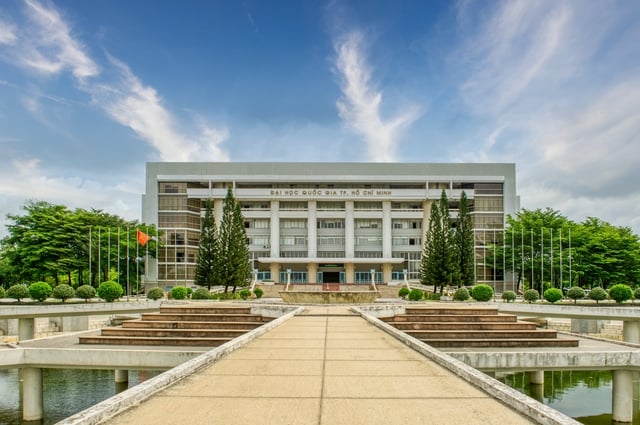
Ho Chi Minh City National University Building, the unit with the most significant improvement in the ranking of the best universities in the world in 2026 by QS
PHOTO: Ho Chi Minh City National University
4 more schools added to university rankings
On the morning of June 19 (Vietnam time), the Quacquarelli Symonds (QS) organization in the UK officially announced the world's best university rankings in 2026. This is the first time Vietnam has 10 schools appearing in this ranking, including 4 new representatives: Danang University (group 1,401+) and the following universities: Van Lang (in Ho Chi Minh City, group 1,001-1,200), Can Tho , Ho Chi Minh City University of Industry (1,201-1,400).
Meanwhile, most of the familiar faces from last year have moved up in rank, continuing the trend in 2025. Specifically, among more than 1,500 universities, Duy Tan University in Da Nang leads Vietnam with 482nd place, up 13 places. Following is Ton Duc Thang University, which moved up from group 711-720 to 684th place. These are also the two top schools in Vietnam in many recent rankings.
The remarkable leap belongs to 2 national universities, when Hanoi National University rose from the 851-900 group to the 761-770 group, and Ho Chi Minh City National University rose from the 901-950 group to the 801-850 group. Ho Chi Minh City National University is also the school with the biggest breakthrough when it rose at least 100 places on the world's best university rankings. Meanwhile, this year's record belongs to Sunway University (Malaysia) when it rose more than 120 places, according to QS.
Meanwhile, only Hue University dropped from 1,201-1,400 to 1,401+, while Hanoi University of Science and Technology maintained its old ranking. The detailed rankings of Vietnamese universities are as follows:
| School name | Ranking 2026 | Ranking 2025 |
|---|---|---|
| Duy Tan University | 482 | 495 |
| Ton Duc Thang University | 684 | 711-720 |
| Vietnam National University, Hanoi | 761-770 | 851-900 |
| Ho Chi Minh City National University | 801-850 | 901-950 |
| Van Lang University | 1,001-1,200 | Not rated yet |
| Can Tho University | 1,201-1,400 | Not rated yet |
| Hanoi University of Science and Technology | 1,201-1,400 | 1,201-1,400 |
| Ho Chi Minh City University of Industry | 1,201-1,400 | Not rated yet |
| Hue University | 1,401+ | 1,201-1,400 |
| Danang University | 1,401+ | Not rated yet |
On a 100-point scale, Van Lang University leads Vietnam in terms of academic reputation with a score of 31.4, followed by Ho Chi Minh City National University (29.1). However, in terms of citation/lecturer ratio, Duy Tan University and Ton Duc Thang University ranked 1st and 2nd with scores of 76 and 74.8, significantly different from other units which only fluctuated from 2.6 (Hue University) to 10 (Hanoi University of Science and Technology).
The contrasting picture also occurred in recruitment results, when one group of schools fluctuated from 30.8 (Hanoi University of Science and Technology) to 68.7 points (Hanoi National University), while the remaining group was at 4.9 (Van Lang University) to 6.8 points (Ton Duc Thang University). However, in terms of reputation with employers, the schools did not differ too much, fluctuating between 6.2 and 27.7 points, with Hanoi National University and Ho Chi Minh City National University being superior with 33 and 44.7 points.
Notably, in the sustainable development criterion, in contrast to the picture of one school achieving 29 points while the rest only fluctuated from 1.1 to 6.4 points in 2025, the 2026 ranking recorded a more positive situation. In which, Hanoi National University leads with 69.4 points, while other schools range from 19.5 (Ho Chi Minh City University of Industry) to 58.7 (Duy Tan University). Van Lang University alone is not scored for this criterion.
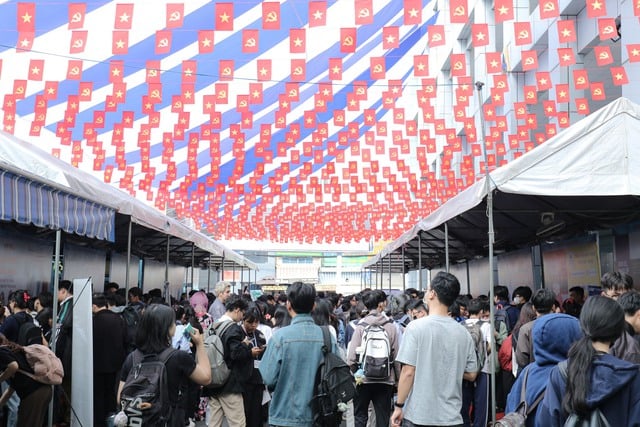
Students participate in the 2025 Career Fair of Ho Chi Minh City University of Industry, one of the new representatives of Vietnam on the QS 2026 rankings
PHOTO: IUH
What is the ranking method?
According to QS, the 2026 World University Rankings are based on nine criteria, of which five are international research network, sustainable development, employment outcomes, international faculty ratio, and international student ratio, all with a weight of 5%. The academic reputation criterion has the highest weight of 30%, followed by citation/faculty ratio (20%), reputation with employers (15%), and faculty/student ratio (10%).
This year, QS also included a new criterion, which is the diversity of international students' nationalities (International Student Diversity), but has not yet calculated the weight.
This year, QS ranked 1,501 higher education institutions from more than 100 countries and territories, in which MIT (USA) continued to hold the number 1 position in the world for the 14th year. Imperial College London (UK) still held the 2nd position, while Stanford University (USA) took the 3rd place from Oxford University (UK), pushing this school down to the 4th position. Harvard University (USA) held the 5th position, down one place compared to last year.
"Only nine countries in the world added five or more universities to the rankings this year, and three of those were from the Arab region. This reflects the rapidly changing education landscape," said Ben Sowter, Senior Vice President of QS, in a statement. Notably, for the first time in history, a Saudi Arabian university has entered the world's top 100, marking an important milestone for the region, according to Mr. Sowter.
QS is one of the three most prestigious, experienced and influential university ranking organizations in the world, along with the Times Higher Education (UK) and Shanghai Ranking Consultancy (China). QS has been ranking universities since 2004, one year after the first global university rankings were published by Shanghai Jiao Tong University (later Shanghai Ranking Consultancy).
Source: https://thanhnien.vn/lan-dau-tien-viet-nam-co-10-truong-vao-bang-xep-hang-dh-tot-nhat-the-gioi-185250619122012031.htm





![[Photo] General Secretary To Lam attends the 18th Hanoi Party Congress, term 2025-2030](https://vphoto.vietnam.vn/thumb/1200x675/vietnam/resource/IMAGE/2025/10/16/1760581023342_cover-0367-jpg.webp)

![[Photo] Nhan Dan Newspaper launches “Fatherland in the Heart: The Concert Film”](https://vphoto.vietnam.vn/thumb/1200x675/vietnam/resource/IMAGE/2025/10/16/1760622132545_thiet-ke-chua-co-ten-36-png.webp)

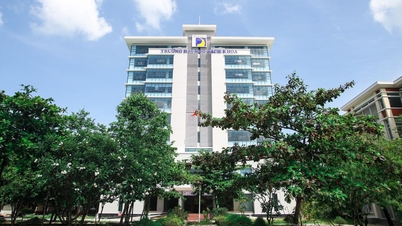






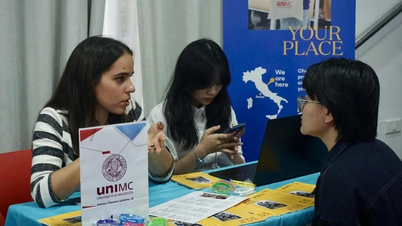
















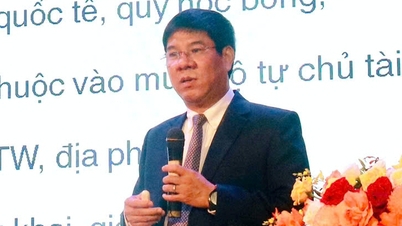







![[Video] TripAdvisor honors many famous attractions of Ninh Binh](https://vphoto.vietnam.vn/thumb/402x226/vietnam/resource/IMAGE/2025/10/16/1760574721908_vinh-danh-ninh-binh-7368-jpg.webp)









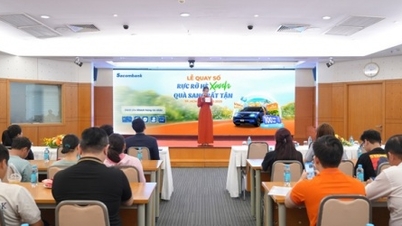





































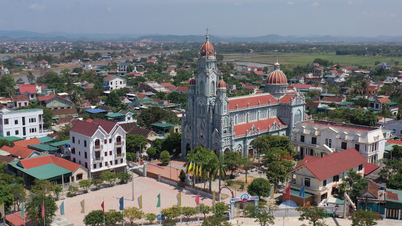

















Comment (0)